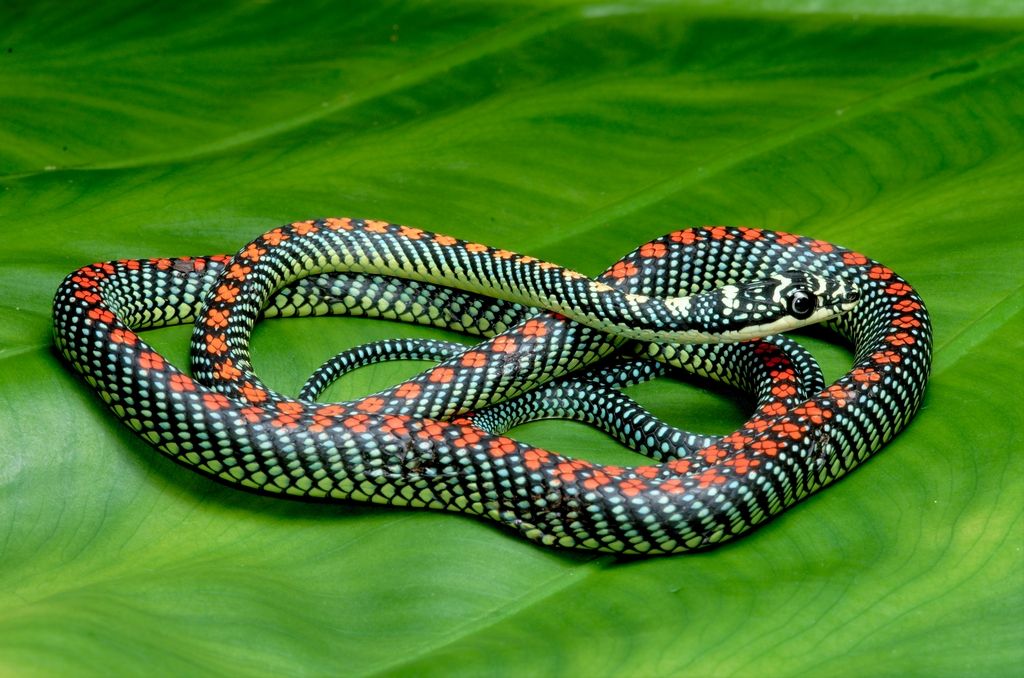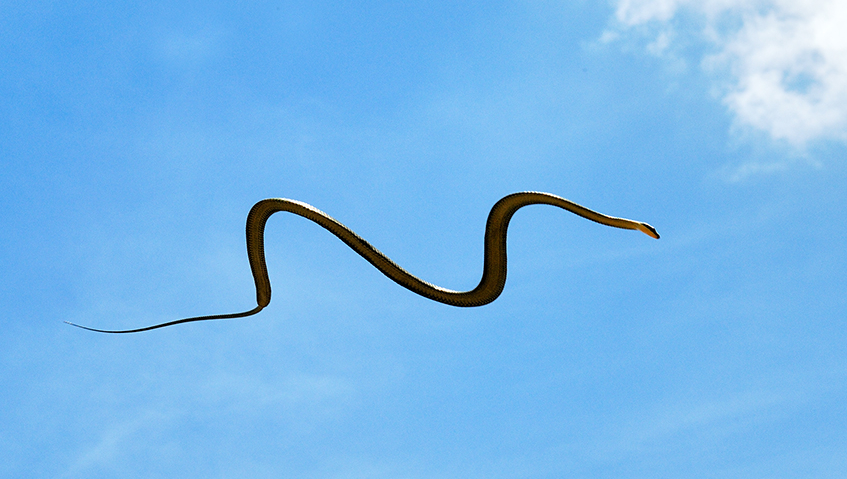Paradise Flying Snake
Chrysopelea paradisi is one of five species of tropical lowland tree snakes of southern and southeast Asia that together comprise the genus Chrysopelea, the “flying snakes”. Chrysopelea snakes are on the order of 0.6–1.2 m in length, with a body mass ranging from tens to a few hundred grams.
Chrysopelea “flying” snakes are the only limbless animals that glide through air. These snakes can actively launch by jumping, maintain a stable glide path, manoeuvre, and safely land without injury. As the snake becomes airborne, the body flattens sequentially from head to vent, forming a cross-sectional shape that is roughly triangular, with a flat surface and lateral ‘‘lips’’ that protrude ventrally on each side of the body; these may diminish toward the vent. A glide trajectory is initiated with the snake falling at a steep angle. As the snake rotates in the pitch axis, it forms a wide ‘‘S’’ shape and begins undulating in a complex three dimensional pattern, with the body angled upward relative to the glide path. The head moves side-to-side, sending traveling waves posteriorly toward the tail, while the body (most prominently, the posterior end) oscillates in the vertical axis. These active movements while gliding are substantially different and more dynamic than those used by any other animal glider.
As the snake gains forward speed, the glide path becomes less steep, reaching minimally recorded glide angles of 138. In general, smaller snakes appear to be more proficient gliders. Morphologically, Chrysopelea appear to be typical snakes, with no special appendages, skin flaps, or other features such as are used by other flying animals. Instead, the snake undergoes aerial locomotion by using its entire body as a flattened, moving wing, constantly reconfiguring it throughout flight.




(Source: The Daily Conversation, NY Times, Encyclopedia of Life—Chrysopelea paradisi)